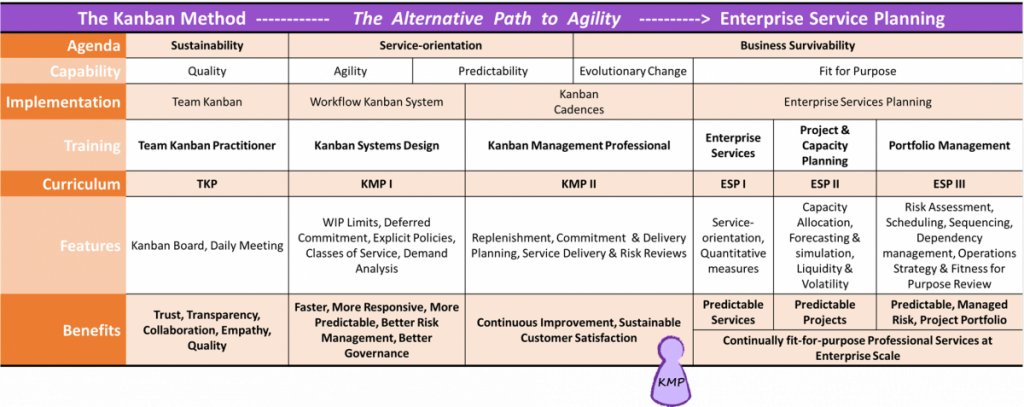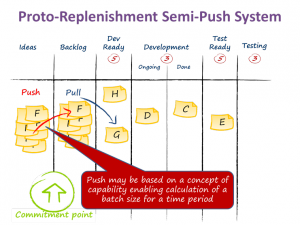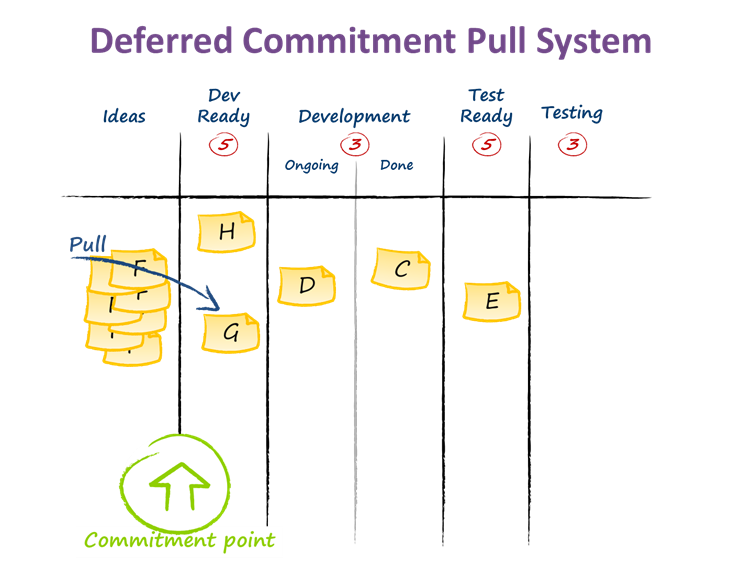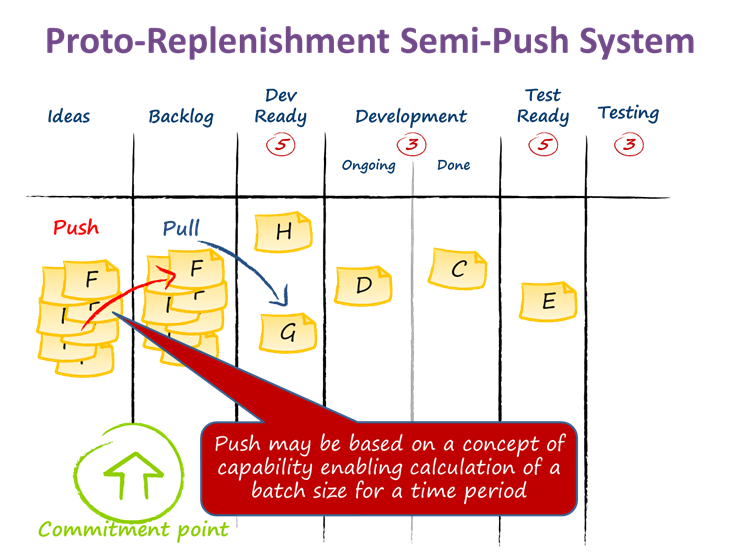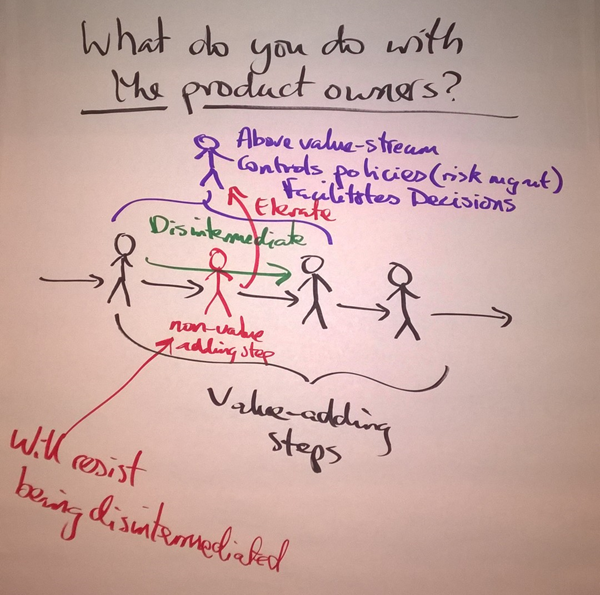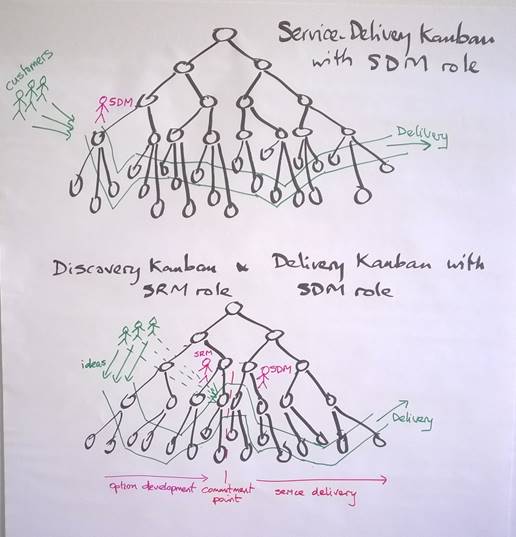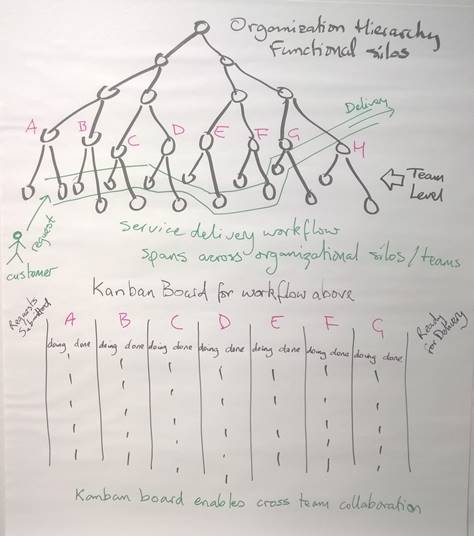With the acknowledgement that two clear roles are emerging in Kanban implementations, the Service Delivery Manager, and the Service Request Manager, does this signal that Lean Kanban University will be reorganizing to offer role-based training? It’s a fair question, and the answer is “No.” This article explains why…
This diagram shows the current Lean Kanban University Alternative Path to Agility currciulum roadmap. It shows the currently offered professional credential of KMP (Kanban Management Professional). KMP is offered to people who complete the KMP I & II classes, a total of 4 days of training. On completion of KMP I & II they know how to analyze and design a kanban system using the STATIK method, and they know how to implement the Kanban Cadences, identify opportunities for improvements, with many ideas on what to change and how it will affect capability. Hence, a KMP knows how to operate the Kanban Method for evolutionary change within their organization.
A KMP could play the role of Service Delivery Manager, Service Request Manager or Kanban Coach (though not at the level of expertise of Kanban Coaching Professional). The difference between a KCP and a KMP is that KCPs are trained in identifying resistance to change, devising strategies to avoid resistance and in counter-measures to overcome resistance and motivate people to get on-board with Kanban adoption. KMPs do not have this training. KMPs are qualified to operate a Kanban Method implementation, KCPs are qualified to introduce the Kanban Method successfully.
We do not feel the need to introduce role-based training because as much as 60-70% of the training for SDMs would overlap with SRMs. We also feel there is lots of value in KMP training for people who will not play the SDM or SRM roles. We hear reports from the field that there is a 60-70% overlap in the training for Scrum scrummasters and product owners taking the CSM and CSPO training. We feel that having role-based training with such a significant overlap in curriculum is inefficient and confusing, so Lean Kanban University will offer the one set of training and the single professional credential of KMP regardless of the role the individual is playing.

